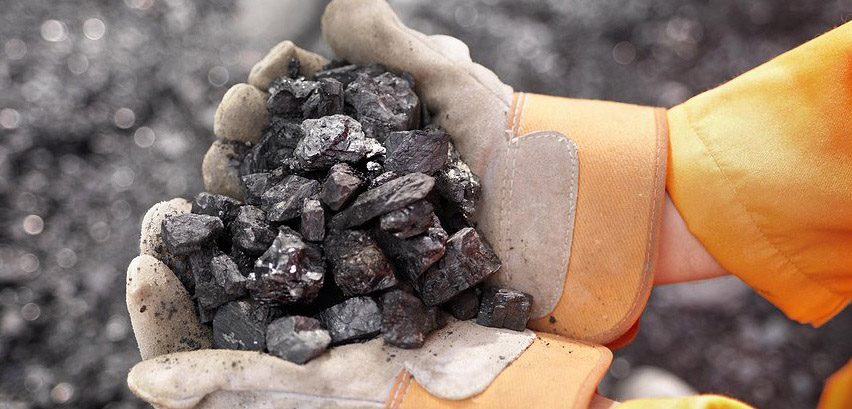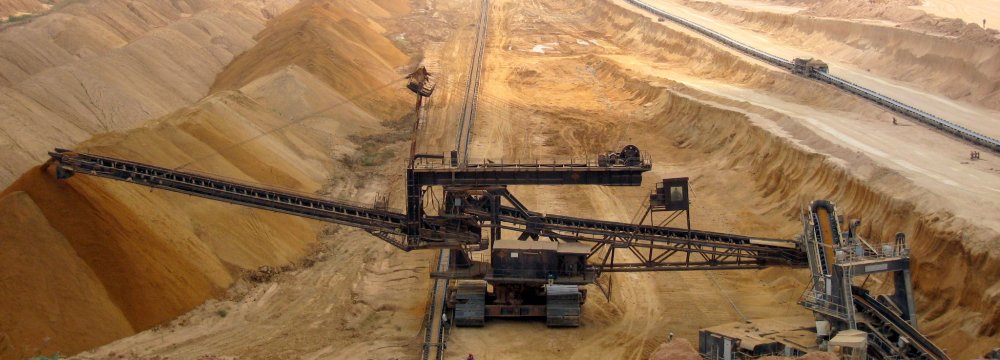
Why Iran Is Moving to Halt Exports of Raw Minerals

 The export of processed minerals will be subject to tax exemption while duties will be imposed on raw iron ore export from March.
The export of processed minerals will be subject to tax exemption while duties will be imposed on raw iron ore export from March.
In Iran, the mining sector remains underdeveloped, despite the fact that the country is among the top 10 mineral-rich states. Government control over mines, which leaves little role for the private sector, and exploration problems, coupled with lack of modern technology, are some of the reasons for the underdevelopment.
Exports of minerals are mainly in the form of raw materials, which generate far less revenue than processed products. As such, the Iranian mining sector currently accounts for only slightly more than 1% of gross domestic product, even as officials believe that the sector can have a far greater share of the economy.
To this end, measures have been taken over the past years to boost the mining sector—among them, an initiative to end exports of raw minerals, reads an article published by US-based media site Al-Monitor. Below is the full text.
The initiative was first introduced by the Iranian Parliament back in 2010 and included in the bill on the Fifth Five-Year Development Plan (2011-16). It set the target of ending the sale of raw minerals in the final year of the plan (which ended March 19, 2016).
That target, however, is yet to be achieved, with officials now saying that it will be materialized in the next Iranian year (beginning March 21, 2017).
In July, Mehdi Karbasian, the head of Iranian Mines and Mining Industries Development and Renovation Organization, said the sale of copper and iron ore in raw form will be stopped in the first half of the next Iranian year, as domestic demand for iron ore is expected to increase with the inauguration of several processing plants in coming months.
The government says iron ore, instead of being exported, will be consumed by steel-making plants as well as iron concentrate and pellet making factories. To encourage the export of these products, the government says export of processed minerals will be subject to tax exemption while duties will be imposed on raw iron ore export from March.
While Iran’s iron ore production has been increasing in recent years, it needs to sustain an annual growth rate of 10% to meet the government’s 2025 target output of over 66 million tons extraction.
As a primary material for industries such as steel-making, Iran, which is the second-largest producer of steel products in the MENA region after Turkey, has to import an estimated 6 million tons of pellets to meet the demand of its steel-making plants, at prices up to 40 times that of exported iron ore.
To tackle this shortfall, the government has invested in several iron ore processing plants, some of which recently became operational, taking the country’s pellet production above 29 million tons.
Miners’ Opposition
While officials plan to impose duties on iron ore exports in the next Iranian year, the rate is yet to be announced. Moreover, the plan needs the approval of the Money and Credit Council.
However, the government’s decision has already drawn opposition from those active in the mining sector.
Critics say that in the absence of low-cost loans and the long-term presence of foreign investors, exports are the only available source of financing for miners.
“The private sector believes that financing, instability of labor laws as well as weak transportation and export infrastructure are some of the problems facing the mining sector,” Sajjad Ghoroqi, a member of the Iranian Association of Iron Ore Producers and Exporters, said.
“The announced plan to ban the sale of raw minerals is literally a statement of policy rather than an actual plan, since the government can’t ban the export of raw material from a legal point of view,” he said.
“As private miners, just like the government, we too understand that selling raw material will have much less profit than selling processed materials like concentrates or pellets. But the time is not ripe for implementing the plan now, since the current iron ore production surpasses domestic demand by iron concentrate and pelletizing factories.”
Peyman Moradi, international relations manager at the Iranian Steel Producers Association, also agrees that iron ore exports are crucial for the private sector.
“As figures show, the private sector exports about 80% of the nearly 5 million tons of iron ore it produces,” he said, adding that miners are also opposed to the government’s decision.
“Iranian producers prefer to sell their products to foreign customers because they offer higher prices. The price of iron ore in Iran is 4 to 8 US dollars lower than the global one.”
As the Iranian government plans to reach output of 55 million tons of crude steel by 2025, it appears reasonable to end or somehow minimize the sale of raw minerals, including iron ore, to complete the steel production chain and increase the industry’s share of GDP.
However, as critics like Ghoroqi and Moradi say, the government can’t ban miners from exporting raw iron ore since it would only lead to the closure of mines.
Experts also note that even if the new processing plants become operational in the coming months, domestic demand for iron ore is still far less than production and miners will thus have no choice but to export their goods to finance their projects.
They say it would take at least a decade to reach a position in which there is enough domestic demand for iron ore. However, the government can speed up the process by supporting miners and providing them with reasonable banking facilities to help them invest in processing plants and complete the country’s steel production chain.
For the time being, experts say a uniform strategy cannot be applied to all mines, as they vary in terms of capacity, scale and type among other properties. As such, the hasty implementation of the government’s plan could end up harming domestic producers, some of which have already been forced to close their production units due to a drop in global iron ore prices.


Trump weighs using $2 billion in CHIPS Act funding for critical minerals

Codelco cuts 2025 copper forecast after El Teniente mine collapse

Electra converts debt, launches $30M raise to jumpstart stalled cobalt refinery

Barrick’s Reko Diq in line for $410M ADB backing

Abcourt readies Sleeping Giant mill to pour first gold since 2014

Nevada army depot to serve as base for first US strategic minerals stockpile

SQM boosts lithium supply plans as prices flick higher

Viridis unveils 200Mt initial reserve for Brazil rare earth project

Tailings could meet much of US critical mineral demand – study

Kyrgyzstan kicks off underground gold mining at Kumtor

Kyrgyzstan kicks off underground gold mining at Kumtor

KoBold Metals granted lithium exploration rights in Congo

Freeport Indonesia to wrap up Gresik plant repairs by early September

Energy Fuels soars on Vulcan Elements partnership

Northern Dynasty sticks to proposal in battle to lift Pebble mine veto

Giustra-backed mining firm teams up with informal miners in Colombia

Critical Metals signs agreement to supply rare earth to US government-funded facility

China extends rare earth controls to imported material

Galan Lithium proceeds with $13M financing for Argentina project

Kyrgyzstan kicks off underground gold mining at Kumtor

Freeport Indonesia to wrap up Gresik plant repairs by early September

Energy Fuels soars on Vulcan Elements partnership

Northern Dynasty sticks to proposal in battle to lift Pebble mine veto

Giustra-backed mining firm teams up with informal miners in Colombia

Critical Metals signs agreement to supply rare earth to US government-funded facility

China extends rare earth controls to imported material

Galan Lithium proceeds with $13M financing for Argentina project

Silver price touches $39 as market weighs rate cut outlook

















